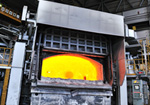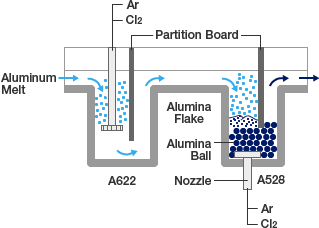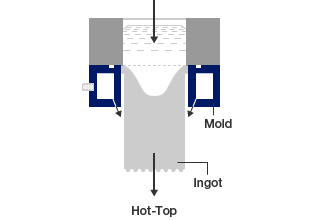DC Casting
At an aluminum expanded material plant, the first process is melting/casting. This manufacturing process has the following important elements:
Quality
Healthy component blend and ingots, and good cast structure
Productivity
Dimensions, shape, and scale efficiency as required by hot processing
Economy
Quality level of raw material, price, yield, and personnel
Safety
Safety, anti-pollution measures, and energy savings

Melting
Raw material rapidly becomes molten in a melting furnace. In order to minimize the loss of molten metal, strict component regulations are applied. Our melting furnace is elaborately designed to maximize heat efficiency.
Molten Metal Processing
Molten metal processing is continuously performed inline, including the elimination of H2 gas and harmful trace elements from the molten aluminum and the separation of nonmetallic inclusions for ingot quality improvement.
Our inline fluxing system basically uses the Alcoa A622 and A528 processes, which are combined, as necessary, with ceramic filters. This is the most sophisticated method available for materials used in cans, foil, aircraft parts, memory discs and other items.

Continuous Casting
In 1944, we put Japan's first DC casting technology into practical use, and we have been a leader in casting technology since that time.
At present, this technology is used to casting large ingots and more than 40 billets concurrently.

Scalper
A scalper is facing equipment that is used to create good surface-quality products from ingots. It scalps the surface of a large ingot at high speed.

